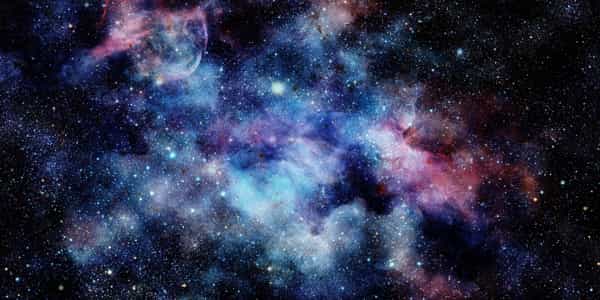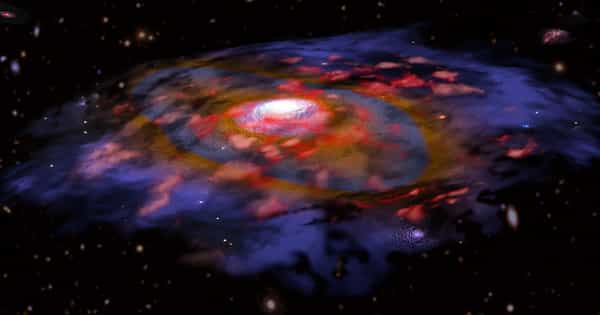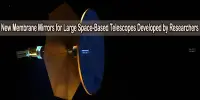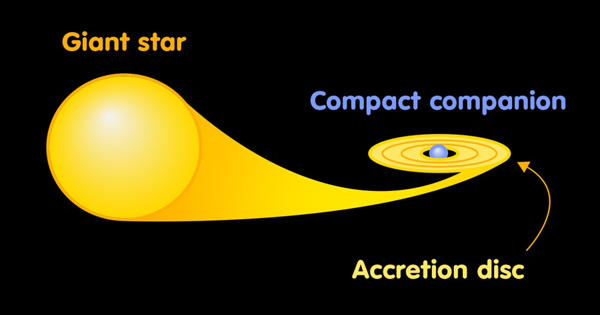It is critical to study and comprehend the early Universe in order to build accurate and consistent astrophysics models. A model of the early Universe would aid scientists in identifying all of the galaxies that existed during the first billion years of cosmic history.
While analyzing data from young, distant galaxies observed with the Atacama Large Millimeter/submillimeter Array, astronomers noticed unexpected emissions coming from seemingly empty regions in space, which were confirmed by a global research team to be from two previously unknown galaxies heavily obscured by cosmic dust. This discovery implies that a large number of such galaxies may still be hidden in the early Universe, far more than researchers anticipated.
Astronomers observe what the Universe looked like a long time ago when they peer deep into the night sky. Because light travels at a finite speed, studying the most distant observable galaxies allows us to travel back billions of years to a time when the Universe was very young and galaxies were just beginning to form stars. One of the last frontiers in astronomy, studying the “early Universe” is critical for developing accurate and consistent astrophysics models. Scientists’ primary goal is to identify all galaxies in the first billion years of cosmic history and to calculate the rate at which galaxies grew by forming new stars.
Scientists serendipitously discover two heavily dust-enshrouded galaxies that formed when the Universe was only 5% of its present age.
Various efforts have been made over the past decades to observe distant galaxies, which are distinguished by electromagnetic emissions that are strongly redshifted (shifted towards longer wavelengths) before reaching Earth. So far, our understanding of early galaxies has been primarily based on observations made with the Hubble Space Telescope (HST) and large ground-based telescopes that probe their ultra-violet (UV) emission.
However, astronomers have recently begun to use the Atacama Large Millimeter/submillimeter Array (ALMA) telescope’s unique capability to study distant galaxies at submillimeter wavelengths. This could be especially useful for studying dusty galaxies that were missed in HST surveys due to dust absorbing UV emission. Because ALMA observes in submillimeter wavelengths, it can detect these galaxies by observing dust emissions.
Astronomers are using ALMA to observe the emissions of 40 target galaxies at cosmic dawn as part of a large program called REBELS (Reionization-Era Bright Emission Line Survey). They recently discovered, using this dataset, that the regions around some of these galaxies contain more than meets the eye.

Dr. Yoshinobu Fudamoto of Waseda University’s Research Institute for Science and Engineering and the National Astronomical Observatory of Japan (NAOJ) discovered strong emission by dust and singly ionized carbon in positions significantly offset from the initial targets while analyzing the observed data for two REBELS galaxies. Even highly sensitive equipment like the HST couldn’t detect any UV emission from these locations, which surprised him. Fudamoto and his colleagues conducted additional research to better understand these enigmatic signals.
They presented a thorough analysis in their most recent paper published in Nature, revealing that these unexpected emissions came from two previously unknown galaxies located near the two original REBELS targets. Because they are almost completely obscured by cosmic dust, these galaxies are not visible in UV or visible wavelengths. One of them is the most distant dust-obscured galaxy ever discovered.
The most surprising aspect of this coincidental discovery is that the newly discovered galaxies, which formed more than 13 billion years ago, are not at all unusual when compared to typical galaxies from the same epoch. “These new galaxies were missed not because they are extremely rare, but because they are completely obscured by dust,” Fudamoto explains.
However, such “dusty” galaxies are uncommon in the early Universe (less than 1 billion years after the Big Bang), implying that the current census of early galaxy formation is most likely incomplete and would necessitate deeper blind surveys. “We may have missed up to one out of every five galaxies in the early Universe so far,” Fudamoto adds.
The researchers anticipate that the James Webb Space Telescope’s (JWST) unprecedented capability and strong synergy with ALMA will lead to significant advances in this field in the coming years. “Completing our census of early galaxies with the currently missing dust-obscured galaxies, like the ones we found this time,” says Pascal Oesch of the University of Geneva, “will be one of the main objectives of JWST and ALMA surveys in the near future.”
Overall, this study is an important step toward determining when the first galaxies began to form in the early Universe, which will help us understand where we are today.
















